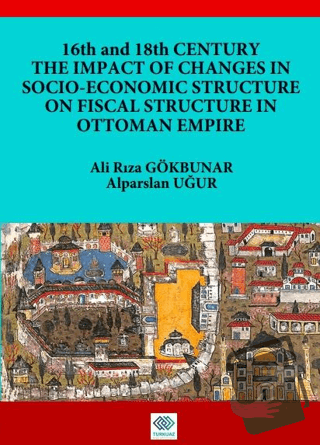16th and 18th Centruy The Impact Of Changes In Socio-Economic Structure On Fiscal Structure In Ottoman Empire

This book analyzes the socioeconomic variables in the Ottoman Empire, which experienced fiscal crises since the 16th century and examines the effects of these variables on the fiscal structure. The deteriorating economic and fiscal structure of the Ottoman economy led to a rapid increase in budget deficits, the monetary system collapsed and the country experienced high inflation. Socioeconomic variables such as population, natural disasters, riots, changes in war techniques and increase in defense expenditures had effects that increased fiscal disintegration. The state has sought solutions to the existing problems with new fiscal institutions such as the iltizam system, the malikane system, the tevzihane system and the collection of Avarız taxes in the form of regular taxes. As a result, the Ayanlık institution, a new social class that occupied the Ottoman economic and administrative structure for a long time, was formed. The state has caused new problems while looking for solutions to economic and administrative problems. The book describes the 16th and 18th century Ottoman economic and administrative structure, its effects and consequences and is written in English in order to contribute to the international academic literature. For this purpose, it is thought that the study will contribute to academics, researchers and students working in the fields of Ottoman History and Fiscal History.
| Taksit Sayısı | Taksit tutarı | Genel Toplam |
|---|---|---|
| Tek Çekim | 120,00 | 120,00 |
| 3 | 43,71 | 131,14 |
| 6 | 23,08 | 138,47 |
| 9 | 16,20 | 145,81 |
| 12 | 12,76 | 153,13 |
| Taksit Sayısı | Taksit tutarı | Genel Toplam |
|---|---|---|
| Tek Çekim | 120,00 | 120,00 |
| 3 | 43,71 | 131,14 |
| 6 | 23,08 | 138,47 |
| 9 | 16,20 | 145,81 |
| 12 | 12,76 | 153,13 |
| Taksit Sayısı | Taksit tutarı | Genel Toplam |
|---|---|---|
| Tek Çekim | 120,00 | 120,00 |
| 3 | 43,71 | 131,14 |
| 6 | 23,08 | 138,47 |
| 9 | 16,20 | 145,81 |
| 12 | 12,76 | 153,13 |
| Taksit Sayısı | Taksit tutarı | Genel Toplam |
|---|---|---|
| Tek Çekim | 120,00 | 120,00 |
| 3 | 43,71 | 131,14 |
| 6 | 23,08 | 138,47 |
| 9 | 16,20 | 145,81 |
| 12 | 12,76 | 153,13 |
| Taksit Sayısı | Taksit tutarı | Genel Toplam |
|---|---|---|
| Tek Çekim | 120,00 | 120,00 |
| 3 | 43,71 | 131,14 |
| 6 | 23,08 | 138,47 |
| 9 | 16,20 | 145,81 |
| 12 | 12,76 | 153,13 |
| Taksit Sayısı | Taksit tutarı | Genel Toplam |
|---|---|---|
| Tek Çekim | 120,00 | 120,00 |
| 3 | 43,71 | 131,14 |
| 6 | 23,08 | 138,47 |
| 9 | 16,20 | 145,81 |
| 12 | 12,76 | 153,13 |
| Taksit Sayısı | Taksit tutarı | Genel Toplam |
|---|---|---|
| Tek Çekim | 120,00 | 120,00 |
| 3 | - | - |
| 6 | - | - |
| 9 | - | - |
| 12 | - | - |
This book analyzes the socioeconomic variables in the Ottoman Empire, which experienced fiscal crises since the 16th century and examines the effects of these variables on the fiscal structure. The deteriorating economic and fiscal structure of the Ottoman economy led to a rapid increase in budget deficits, the monetary system collapsed and the country experienced high inflation. Socioeconomic variables such as population, natural disasters, riots, changes in war techniques and increase in defense expenditures had effects that increased fiscal disintegration. The state has sought solutions to the existing problems with new fiscal institutions such as the iltizam system, the malikane system, the tevzihane system and the collection of Avarız taxes in the form of regular taxes. As a result, the Ayanlık institution, a new social class that occupied the Ottoman economic and administrative structure for a long time, was formed. The state has caused new problems while looking for solutions to economic and administrative problems. The book describes the 16th and 18th century Ottoman economic and administrative structure, its effects and consequences and is written in English in order to contribute to the international academic literature. For this purpose, it is thought that the study will contribute to academics, researchers and students working in the fields of Ottoman History and Fiscal History.







